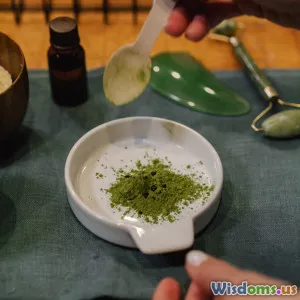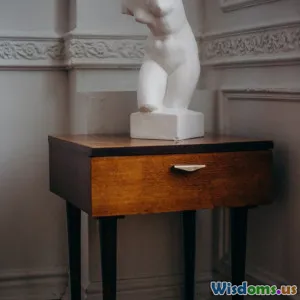
Reviving Historical Beauty Routines
6 min read Explore ancient beauty rituals and their modern adaptations for timeless skincare and wellness. (0 Reviews)
Reviving Historical Beauty Routines
Beauty is not just a modern pursuit; it has deep roots in history. Across civilizations, women and men have sought ways to enhance their appearance, using natural ingredients and rituals passed down through generations. This article delves into some remarkable historical beauty routines and explores how we can revive them today.
The Allure of Ancient Beauty Practices
Ancient Egypt: The Land of Luxurious Rituals
Cleopatra, the last Pharaoh of Ancient Egypt, is often remembered for her beauty and intellect. Her skincare routine included milk baths to soften her skin, made with the milk of donkeys, which is rich in lactic acid. This ancient practice is not only luxurious but also serves as a natural exfoliant, making it relevant for today’s skincare enthusiasts.
Modern Adaptation: You can create a similar milk bath at home using whole milk or yogurt mixed with essential oils for fragrance. This soothing treatment can be a relaxing addition to your self-care routine.
Greece: The Power of Olive Oil
In ancient Greece, olive oil was referred to as “liquid gold” for its numerous benefits. Both men and women used it for skincare, haircare, and even as a massage oil. The Greeks understood the importance of hydration and nourishment for the skin.
Modern Adaptation: Incorporate pure olive oil into your daily skincare routine. Use it as a moisturizer or mix it with your favorite essential oils for a luxurious body massage. It's also excellent for removing makeup!
The Roman Influence: Exfoliation and Fragrance
The Romans were known for their public baths, where social gatherings took place alongside cleansing rituals. They used various natural ingredients such as honey and salt for exfoliation. Honey, known for its antibacterial properties, was also used as a moisturizer and face mask.
Modern Adaptation: Create an exfoliating scrub using a mixture of sugar or salt and honey. This DIY scrub not only exfoliates but also hydrates the skin, leaving it soft and rejuvenated.
The Beauty Secrets of the East
India: Turmeric and Herbal Remedies
In India, beauty treatments often include turmeric, known for its anti-inflammatory and antibacterial properties. The practice of using a turmeric paste for skin brightening has been around for centuries, particularly in preparations for weddings.
Modern Adaptation: You can easily incorporate turmeric into your skincare by mixing it with yogurt for a brightening face mask. Always remember to patch test, as turmeric can stain the skin.
Japan: The Art of Layering
Japanese beauty rituals emphasize layering products for maximum effectiveness. The multi-step skincare routine, involving cleansing oils, emulsions, serums, and moisturizers, is rooted in the belief that prevention is key to beauty.
Modern Adaptation: Invest in quality skincare products and adopt a multi-layering routine. Start with a gentle cleanser followed by a hydrating essence, serum, and finish with a moisturizer to seal in hydration.
Embracing the Wisdom of the Past
Reviving historical beauty routines is not just about nostalgia; it’s about adopting time-tested techniques that emphasize natural ingredients and holistic approaches. Today, many are turning towards organic and natural products, making the revival of these ancient practices not only timely but essential.
Practical Tips for Incorporating Historical Routines
- Research Ingredients: Understand the traditional ingredients used in historical beauty routines and seek out modern equivalents or natural products.
- Experiment with DIY: Try making your own beauty products at home using recipes inspired by ancient practices. This can be a fun and educational experience.
- Mindfulness in Routine: Embrace the ritual aspect of beauty routines. Take the time to enjoy the process, whether it's a relaxing bath or a carefully applied facial mask.
- Stay Informed: Follow beauty blogs and historical studies to learn more about ancient practices and how they can be modernized.
Conclusion
Reviving historical beauty routines offers a treasure trove of wisdom that can enhance our modern skincare practices. By blending ancient rituals with contemporary knowledge, we can cultivate a beauty regimen that honors the past while nourishing our skin today. So, why not take inspiration from the ages and add a touch of history to your beauty routine?
Rate the Post
User Reviews
Popular Posts





















